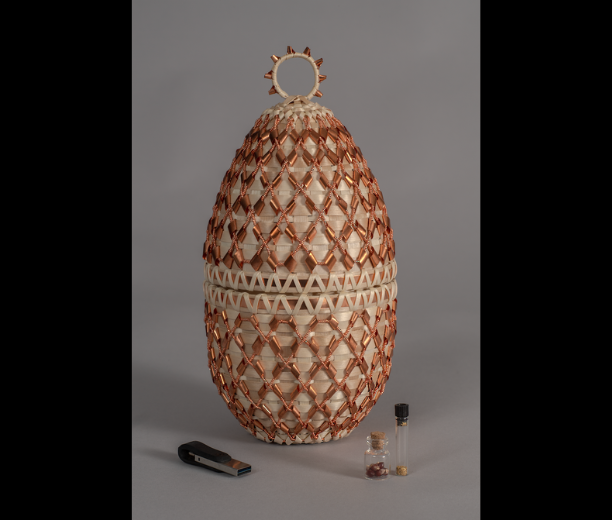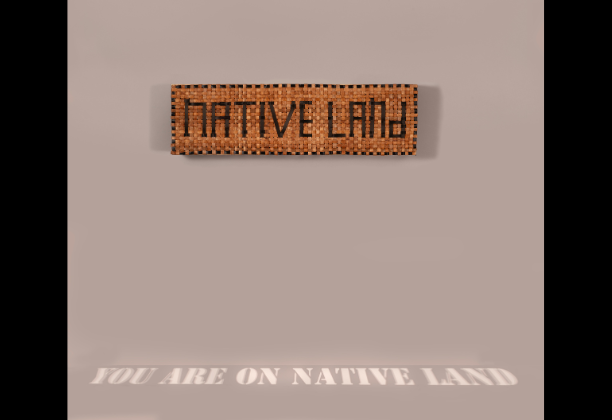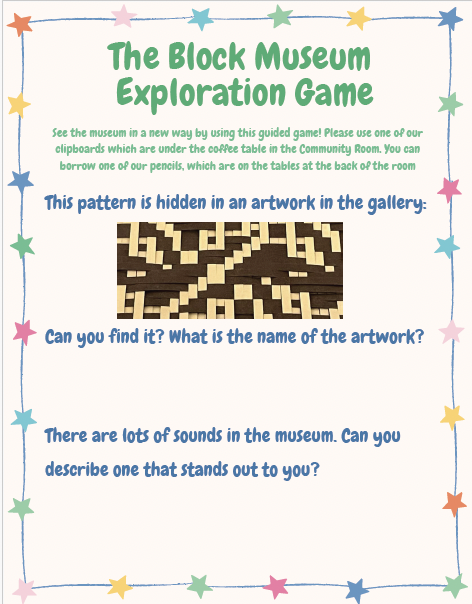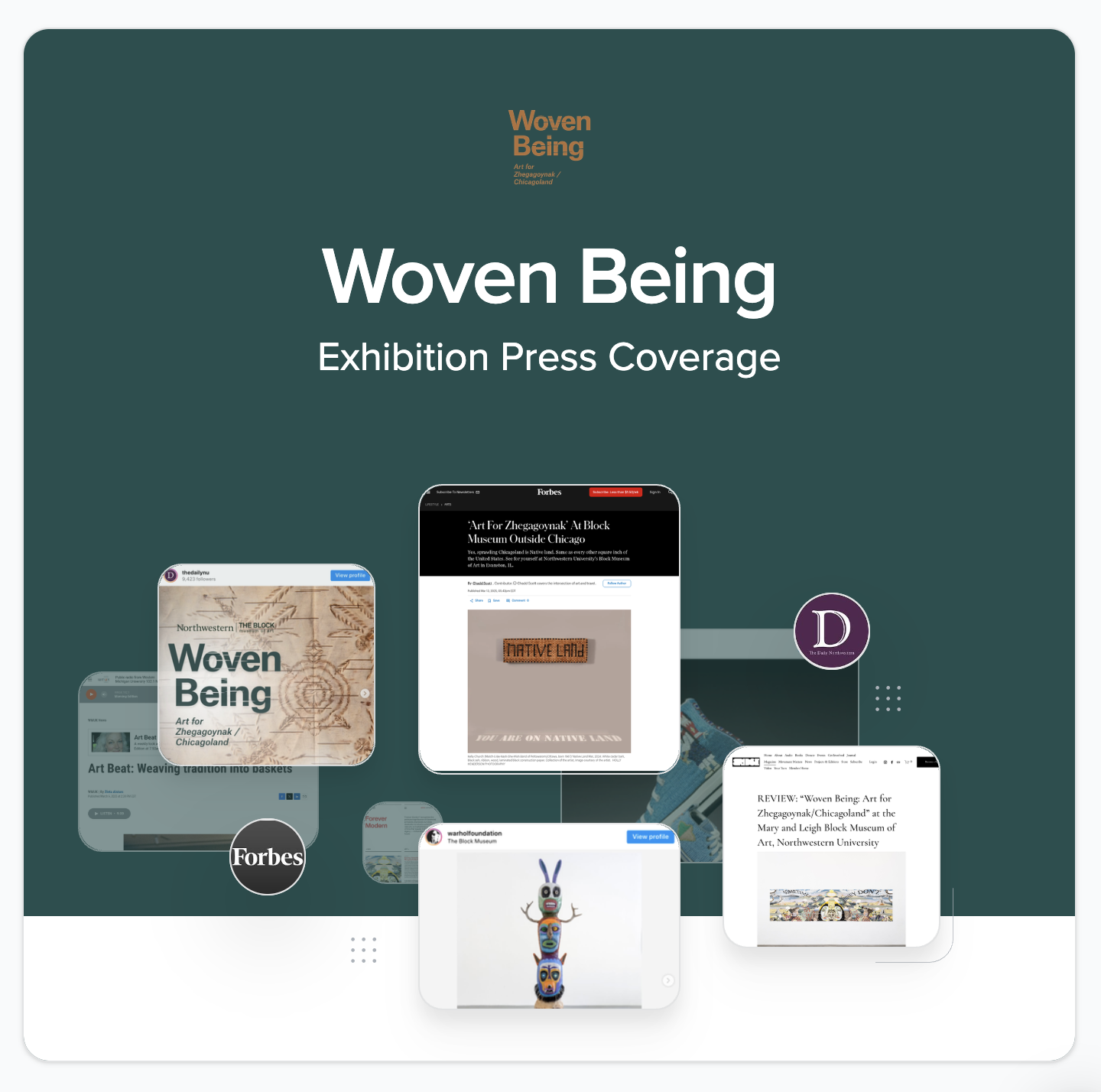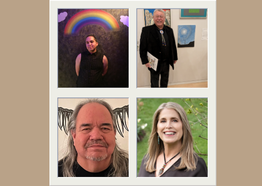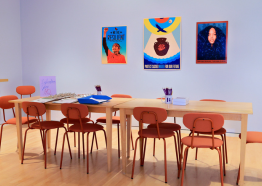Zhegagoynak, the place now known as Chicagoland, is a vital center for Indigenous art, past and present.
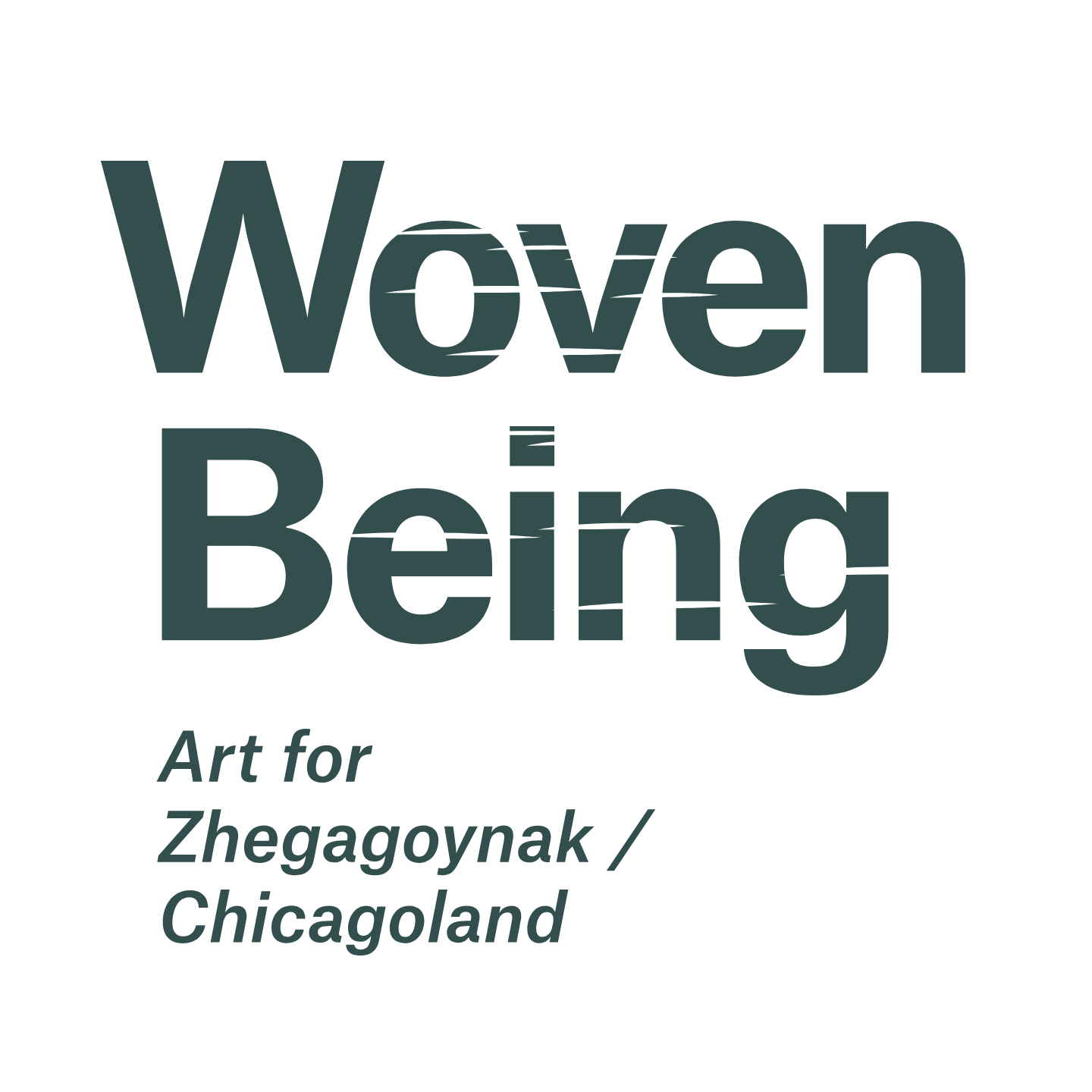
Through the perspectives of four collaborating artists with connections to Zhegagoynak—Andrea Carlson (Grand Portage Ojibwe/European descent), Kelly Church (Match-E-Be-Nash-She-Wish Tribe of Pottawatomi/Ottawa), Nora Moore Lloyd (Lac Courte Oreilles Band of Lake Superior Ojibwe), and Jason Wesaw (Pokagon Band of Potawatomi) —Woven Being explores confluences that are continuing to shape Indigenous creative practices in the region and beyond.
The Chicagoland region is a longstanding cultural and economic hub for Indigenous peoples, including the Council of Three Fires— the Ojibwe, Potawatomi, and Odawa—as well as the Menominee, Miami, Ho-Chunk, Sac, Fox, Kickapoo, and Illinois nations. People from many Indigenous nations call the region home today, and the city of Chicago has the third-largest urban Indigenous population in the United States.
Despite this rich history, Indigenous voices have often been excluded from Chicago's art histories. This silence is harmful. Guided by Indigenous collaborations, priorities, and voices, the exhibition foregrounds the perspectives of Indigenous artists currently based in the city and those from nations forcibly displaced from the area in the nineteenth century.
Collaborating artists have partnered with The Block to create “constellations” of their own artwork and historical and contemporary artworks, primarily by Indigenous artists of the region. Overall Woven Being will present more than 80 works by 33 artists that speak to the diversity of Indigenous art, materials, and time, including several new and commissioned works and installations. Selections highlight themes we have identified in dialogue with diverse project advisors: kinship between materials, relations across regional landways and waterways, and the weaving together of past, present, and future.
Seen together, the exhibition works form intimate and interwoven stories that resist monolithic storytelling. Instead of a comprehensive overview of regional art, Woven Being integrates four Indigenous perspectives of Chicagoland’s layered art histories. Such perspectives are central not only to understanding Chicago and its region, but also to understanding the widely interconnected Indigenous stories that have been, and continue to be, woven across the entirety of Turtle Island (North America).
Pronounce Zhegagoynak
Collaborating Artists
Andrea Carlson (Grand Portage Ojibwe/European descent, born 1974) works in drawing, painting, print, sculpture, and video to create vividly intricate imagery that maps the mosaic entanglements of cultural narratives and institutional authority. Her current research involves land narratives, decolonization, Indigenous futurisms, and assimilation metaphors in film.
Kelly Church (Match-E-Be-Nash-She-Wish Tribe of Pottawatomi/Ottawa, born 1967) is a fifth generation black ash basket maker, as well as a fiber artist, educator, activist, and culture keeper. She learned black ash basketry from her father, Bill Church, and cousin, John Pigeon.
Nora Moore Lloyd (Lac Courte Oreilles Band of Lake Superior Ojibwe, born 1947) was trained as a photographer and videographer. She works in multiple mediums to create artworks that document the stories of Indigenous elders and to connect with cultural practices related to harvesting birch bark and wild rice. Nora has been an active member of Chicago’s Native American community for decades.
Jason Wesaw (Pokagon Band of Potawatomi, born 1974) works in an array of media including ceramics, drawings, and textiles to create abstract works that are informed by the land and relate stories that are rooted in place and the acknowledgment of spirit. He serves as a peacemaker in his community.
Woven Being: Exhibition Publication
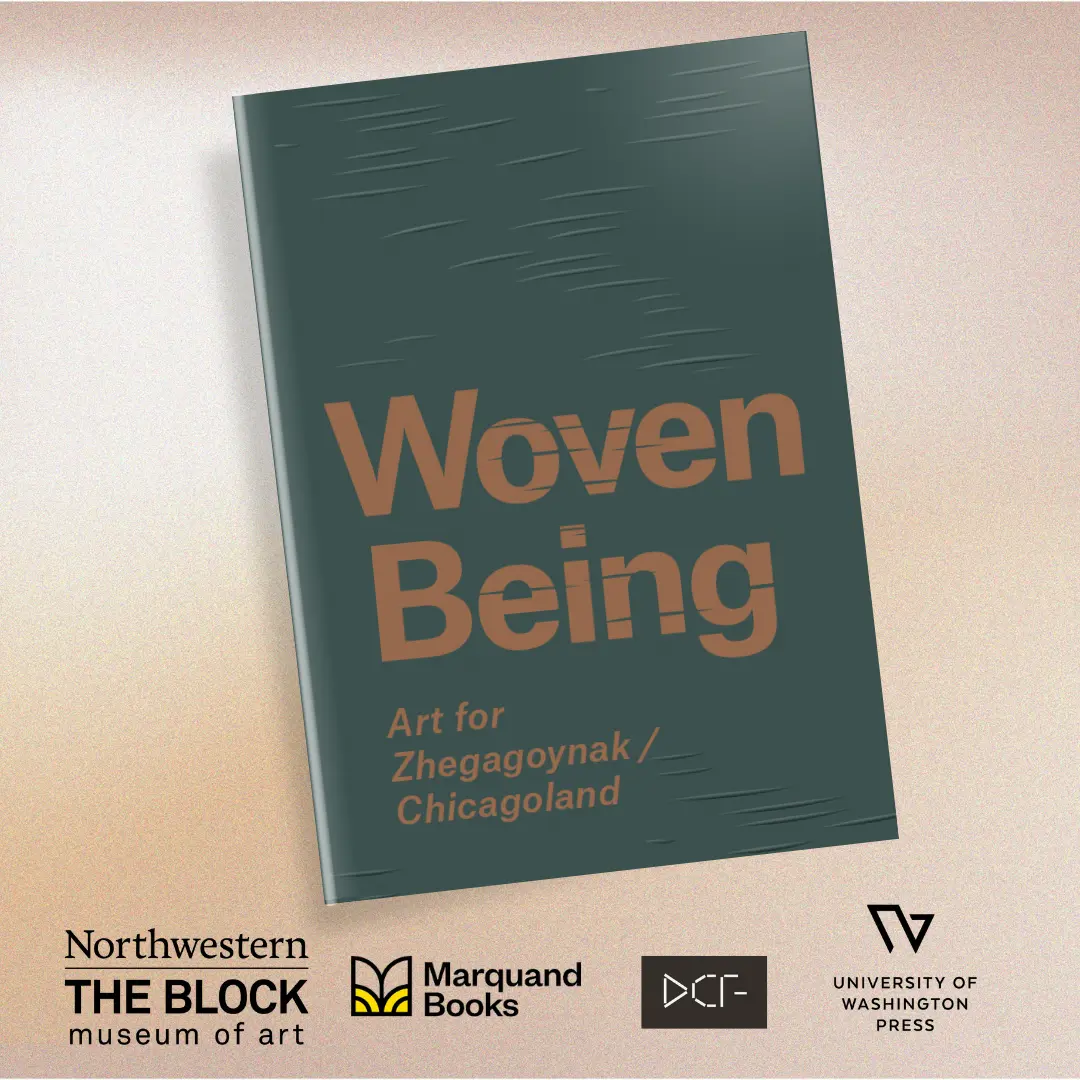
A 160-page multi-authored publication centers Indigenous voices and explores the exhibition’s expansive themes and questions.
The Woven Being book is published by The Block Museum of Art at Northwestern University, produced by Marquand Books, Seattle , designed by OTAMI, Montreal, and distributed by the University of Washington Press
Art for Zhegagoynak: A Resource Guide to a Local History
The Block is proud to share Art for Zhegagoynak: A Resource Guide to a Local History by Jacqueline Lopez, 2024-2025 Interdisciplinary Graduate Fellow—chronicling seventy years of Indigenous-led artmaking, mentorship, and community building in the region now known as Chicagoland. This guide will also appear as a chapter in the exhibition’s publication, releasing in July 2025.
Explore Exhibition Press Coverage
For media inquiries, please contact Lindsay Bosch, Associate Director, Marketing, Communications and Digital Strategy (lindsay.bosch [at] northwestern.edu)
Project Team

Woven Being project development was led by a collaborative team including Kathleen Bickford Berzock (Associate Director of Curatorial Affairs), Jordan Poorman Cocker (Kiowa), Terra Foundation Guest Co-Curator); Janet Dees (former Steven and Lisa Munster Tananbaum Curator of Modern and Contemporary Art); Erin Northington (Susan and Stephen Wilson Associate Director, Campus and Community Education and Engagement); Dan Silverstein (Associate Director of Collections and Exhibition Management). The project Terra Foundation Fellows are Marisa Cruz Branco (Isleta Pueblo) and Teagan Harris (Cherokee Nation).
At Northwestern, we are grateful for the participation of the Center for Native American and Indigenous Research and its affiliates. We are also grateful for the participation of Indigenous knowledge sharers, including artists, community leaders, and scholars, and non-Indigenous allies, who are contributing to the exhibition process and to Woven Being’s presentation at Northwestern University.
For more information about Native American and Indigenous research at Northwestern University, visit the Center for Native American and Indigenous Research (CNAIR).
Note: We have used the preferred spelling provided by the artist for the names of Indigenous nations.
Image (l to r): Dan Silverstein, Jason Wesaw, Kathleen Bickford Berzock, Andrea Carlson, Kelly Church, Nora Moore Lloyd, Jordan Poorman Cocker, Janet Dees, Erin Northington.
Credits
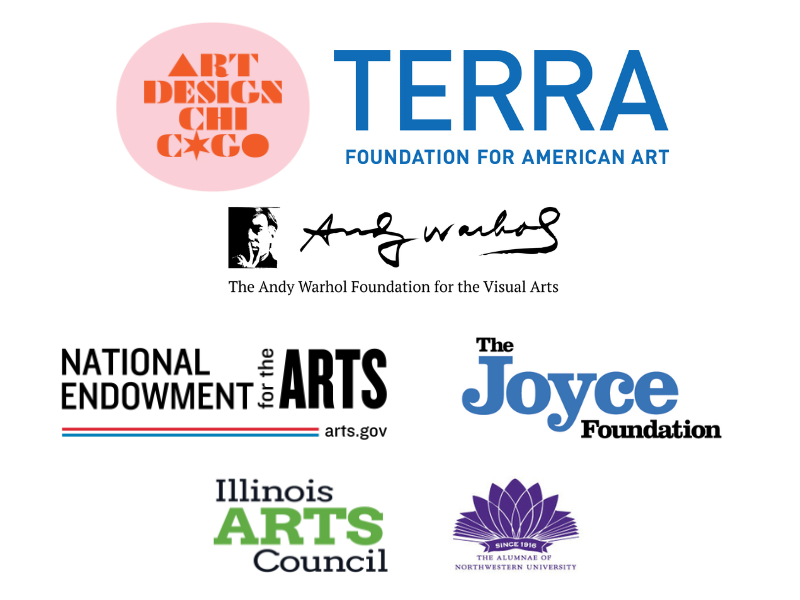
Woven Being is part of Art Design Chicago, a citywide collaboration initiated by the Terra Foundation for American Art that highlights the city’s artistic heritage and creative communities. Lead support for Woven Being is generously provided by the Terra Foundation for American Art. Major support is provided by the Andy Warhol Foundation for the Visual Arts. This project is supported in part by the National Endowment for the Arts , The Joyce Foundation, and by a grant from the Illinois Arts Council. Additional generous support is provided by the Sandra L. Riggs Publication Fund and the Alumnae of Northwestern University.

